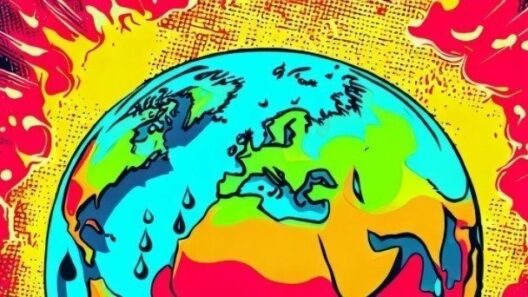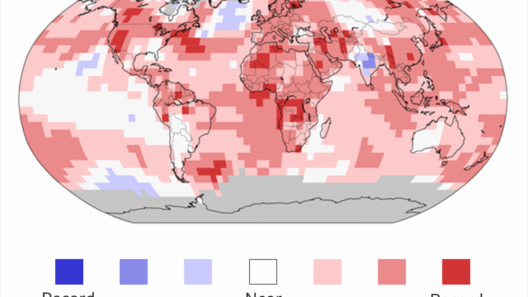Global warming is an existential threat that transcends borders, affecting ecosystems, economies, and societies. It is essential to analyze the intricate interplay between manmade activities and the Earth’s climate. This examination goes beyond the visual data often depicted in charts and graphs, calling for a more nuanced understanding of anthropogenic impact on global warming.
At the core of this analysis lies the understanding of the greenhouse effect. Greenhouse gases, including carbon dioxide, methane, and nitrous oxide, trap heat in the Earth’s atmosphere, creating a warming effect. While these gases are naturally occurring, human activities have significantly exacerbated their concentrations. Industrialization, deforestation, and intensive agriculture are the primary culprits driving this phenomenon.
Industrial activities, particularly since the Industrial Revolution, have released unprecedented amounts of greenhouse gases. Factories and power plants belch out fumes that contain carbon dioxide as a byproduct of burning fossil fuels. The increase in energy demand results in an addiction to coal, oil, and natural gas. This reliance not only pollutes the air but also contributes to the alarming rise in global temperatures.
In addition to industrial emissions, transportation plays a formidable role in climate change. The combustion engines that power automobiles and airplanes emit copious amounts of carbon dioxide and other pollutants. With the burgeoning global population and urbanization, the demand for transportation has surged, further increasing emissions. Public transport, while a viable option, often falls short in providing the necessary infrastructure to mitigate these emissions on a larger scale.
Furthermore, the agricultural sector is a significant contributor to climate change, with livestock production and rice cultivation emitting methane, a potent greenhouse gas. Intensive agricultural practices not only deplete soil health but also contribute to deforestation, which disrupts local ecosystems and reduces the planet’s capacity to absorb carbon dioxide. Monoculture farming exacerbates this issue, as it degrades biodiversity and increases vulnerability to climate-related events.
Deforestation, a silent yet pivotal contributor to global warming, has dire implications for the climate. Trees absorb carbon dioxide, and their removal not only increases atmospheric CO2 levels but also disrupts local climates, leading to alterations in rainfall patterns and increased incidence of droughts or floods. The loss of forests in tropical regions significantly reduces biodiversity, pushing numerous species towards extinction and destabilizing entire ecosystems.
The interplay of socioeconomic factors also warrants examination. Wealth disparities influence emissions and the capacity for mitigation. Developing nations, often disproportionately affected by climate change, face challenges in balancing economic growth with environmental sustainability. Meanwhile, industrialized nations bear historical responsibility for emissions but often have the resources to invest in greener technologies. This dynamic raises questions of equity and justice within climate discourse, highlighting the need for a comprehensive understanding of social and economic dimensions alongside environmental factors.
As climate change accelerates, scientists emphasize the importance of feedback loops. For instance, melting polar ice caps reduce the Earth’s albedo effect, leading to increased absorption of solar energy and further warming. Similarly, thawing permafrost releases stored methane, compounding the problem. Recognizing these feedback mechanisms is crucial for creating models that accurately predict future climate scenarios and for implementing strategies that can effectively address these changes.
Public perception and awareness also play instrumental roles in shaping climate policies. Educational initiatives must not only inform but also empower individuals to advocate for sustainable practices. The media, social movements, and grassroots organizations have emerged as vital platforms for raising awareness about climate change. Their influence can drive significant changes in public opinion, leading to greater demand for accountability from governments and industries alike.
Technological advancements hold promise in combating climate change. Innovations in renewable energy, such as solar, wind, and hydropower, provide sustainable alternatives to fossil fuels. The potential of carbon capture and storage technology offers a glimmer of hope by proposing methods to sequester carbon emissions before they enter the atmosphere. However, reliance on technology alone is insufficient; it must be complemented by behavioral changes at the individual and systemic levels.
Mitigation strategies must be multifaceted, incorporating adaptation and resilience building to foster communities that can withstand climate impacts. Urban planning that prioritizes green spaces, sustainable transportation, and energy-efficient buildings can create more livable cities that reduce emissions and enhance quality of life. Additionally, fostering local food systems and regenerative agriculture can bolster food security while mitigating agricultural emissions.
In summation, understanding man’s impact on global warming requires delving deeper than mere statistics and visual representations. It necessitates an appreciation for the complexities of human activities, socioeconomic factors, and ecological interdependencies. A collaborative effort, involving various stakeholders, is essential for fostering a path towards sustainability. The gravity of the challenge demands a collective commitment to transformative action, ensuring that future generations inherit a planet capable of sustaining life in all its forms.







